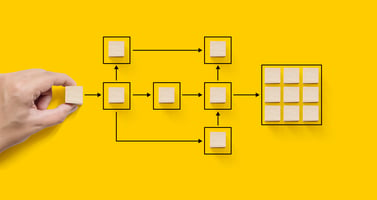The future of work is changing and it's time to embrace the new world. The workforce, workplace and...
Identify skills gaps before they happen
Digital disruption will change the future of work
Digital disruption is affecting the future of work, and it's not just a US phenomenon. It's happening around the world.
-
Digital disruption will change the way we work.
-
Digital disruption will change the way we live.
-
Digital disruption will change the way we think.
-
Digital disruption will change the way we learn.
Digital disruption is changing everything about how you do your job, including how you communicate with your employees, customers and suppliers; what tools they use to do their jobs; where they do those jobs (at home or in an office); and even what kind of education employees need to have these days to be successful compared with 20 years ago.
Traditional workforce planning is reactive, not proactive
Traditional workforce planning is reactive, not proactive. Traditional workforce planning is based on past data and assumptions about the future. This is a problem because it doesn't help you identify your skills gaps before they happen.
Identify where people and technology will meet in the future to deliver strategic business outcomes
To identify where people and technology will meet in the future to deliver strategic business outcomes, ask yourself:
-
What are our organizational goals?
-
What are our individual goals?
-
How do we want to get there?
If you can answer these questions, you'll be able to spot some of the skills gaps that might emerge if your team does not stay ahead of evolving technologies.
Get insights into which skills need to be shifted/gained/displaced/lost as AI transforms work
You’re in the middle of a skills gap. You know it and your employees know it, but how do you identify what the gaps are? How do you make sure that your business is ready to handle them?
Before we look at how we can help with identifying the gaps, let’s first take a look at why it’s so important to know what skills will be needed in the future and which ones will be obsolete/missing/displaced/lost.
There are some new jobs emerging due to technology advancements like automation, artificial intelligence (AI), etc., requiring different sets of skills than before. These shifts tend to happen faster than normal because they require specific knowledge that isn't taught in schools or universities yet; therefore making these shifts difficult for traditional HR teams trying not to just identifying them but also training employees fast enough before competitors do.
Identify skills gaps that could impact your business before they actually happen
How?
In the same way that you identify an employee's most important roles, you can also take the time to identify their other roles and responsibilities. Then, by comparing the two lists, you'll be able to understand what skills are needed for each role and how they relate to one another. This will allow you better visibility into your talent landscape which will help make future hiring decisions easier.
Develop an understanding of roles and reskilling opportunities from AI adoption
While artificial intelligence (AI) is not meant to replace people, it will change the future of work. As AI evolves and becomes more prevalent, it will create new roles and opportunities for learning that we haven't seen before.
To prepare your organization:
-
Develop an understanding of roles and reskilling opportunities from AI adoption.
-
Identify skills gaps before they happen by creating talent maps based on current employee skill levels, expected business outcomes and desired careers at each level within the organization. This can be done by analyzing the current state using available data sources such as talent management systems or HRIS platforms; conducting internal surveys; interviewing managers about their expectations for performance; reviewing employee resumes; etc.
Look further ahead than 1-2 years to identify emerging, mid-term and long-term skills shifts and impacts caused by new technologies
Knowing what you don’t know is a critical piece of the puzzle. The effort to uncover talent gaps should be part of an organization’s overall strategy, not as an isolated activity that only looks at skills needs over 1-2 years. It is important to look further ahead than 1-2 years to identify emerging, mid-term and long-term skills shifts and impacts caused by new technologies.
Faethm is the only workforce analytics platform that can track and predict global technology disruption and its impact on global workforces at work
Faethm is a strategic workforce planning tool that provides insights into the future needs of your organization, as well as solutions for dealing with these issues. Faethm is the only workforce analytics platform that can track and predict global technology disruption and its impact on global workforces at work. Find out how to use this game-changing tool to drive your business results today.



